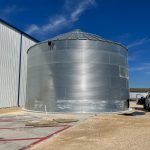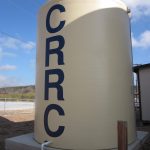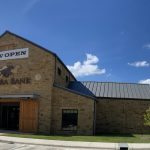Engineering Services
Maximizing the Available Water Resources on each Project
We provide professional engineering design and consulting services for developers, architects, and engineers who desire to make water conservation a priority in your project. Whether it be for LEED purposes, as a requirement by a municipality, or just an imperative in the design, water conservation technologies create many advantages for your project.
We provide consulting and design expertise in many areas related to the efficient use of water in a project. We search for all of the opportunities available in order to create the most efficient and cost-effective solution. Our services are available for individual systems within a project such as a rainwater harvesting system or we can create comprehensive solutions which involve an integration of several systems.
Our services provide the typical deliverables of construction plans, specifications, and cost estimates for system installation. We can also provide all of the necessary information and documentation for any LEED project and have completed work on many LEED rated projects.
Services
- Water Conservation Consulting
- Rainwater Harvesting Systems
- Graywater Recovery Systems
- Stormwater Management
- Site Planning
- Integrated Systems Planning and Design
- Wastewater Recycling
- Development of performance specifications
- Cost Estimation and Cost/Benefit analysis
Design/Build Services
As another option, IWS provides complete design/build services. Since we have the expertise of installing these water-efficient systems, we have a unique perspective on what actually works in the real world. This service also allows us to quickly integrate the design and installation of these integrated water conservation systems into aggressive construction schedules.
Since we are involved in the design and installation of these systems, we are constantly developing new methods and system designs in order to improve the effectiveness of these water-efficient sustainable systems in real practice. We push for constant efficiency improvements so that these systems can be more effective and less expensive to implement so that quicker paybacks can be achieved.
The following principles are paramount to the design process:
- Understanding the relationship between water and energy: By reducing water use, water treatment is reduced, thus saving energy
- Minimizing indirect uses of water, particularly by conserving energy
- Recognition that all water, including stormwater and wastewater, is a precious resource
- Collection of all water falling on the site either for use or infiltration to groundwater
- Reduction of indoor and outdoor water demand
- Cascading water usage for multiple uses before it leaves the site
- Overall site water balance to reduce water footprint
Requirement by municipality or incentive from municipality:
With increasing population pressure and demand for water, municipalities and other agencies are looking for ways to conserve water so that they can prolong the use of their existing water supply capacity as long as possible so that they can delay the investment into new water supply sources which is very expensive. Many municipalities, such as Austin, Texas, offer commercial rebates for water conserving technologies such as rainwater harvesting systems. We can assist in the application of these types of rebate programs.
Many municipalities and agencies are looking for ways to reduce impervious cover in order to alleviate flooding issues in urban areas. Rainwater harvesting systems can help to decrease the effect of impervious cover since the system will collect and store the rainwater that falls on the roof the building.
In the recently updated Water Quality Management Technical Manual for the Highland Lakes Watershed Ordinance of LCRA jurisdictional area, they have included a credit for rainwater harvesting systems installed on single family residences, multi-family complexes, and commercial developments. In this ordinance, rainwater harvesting systems could generate a 50% impervious cover reduction for the area that drains to the rainwater harvesting cisterns.
In addition, by using rainwater harvesting systems, municipalities could allow you to decrease the size of your water quality pond required for the development. The harvested rainwater can easily be used in the irrigation of the landscaped areas of the development.
LEED points:
Water conservation technologies and techniques has the ability to garner 5 points in the LEED-NC rating system.
- Water Efficient Landscaping, Reduce water use by 50%
- Water Efficient Landscaping, No potable water or no irrigation use
- Innovative Wastewater Technologies
- Water Use Reduction, 20% reduction
- Water Use Reduction, 30% reduction
Responsibility in Design:
Not only does water conservation help to save your project or development time and money, but it shows the public that you are a responsible professional that cares about the sustainability of the communities’ water resources. Systems such as rainwater harvesting systems are just as easy to retrofit the project as it is to design them during the planning phases of the project.





